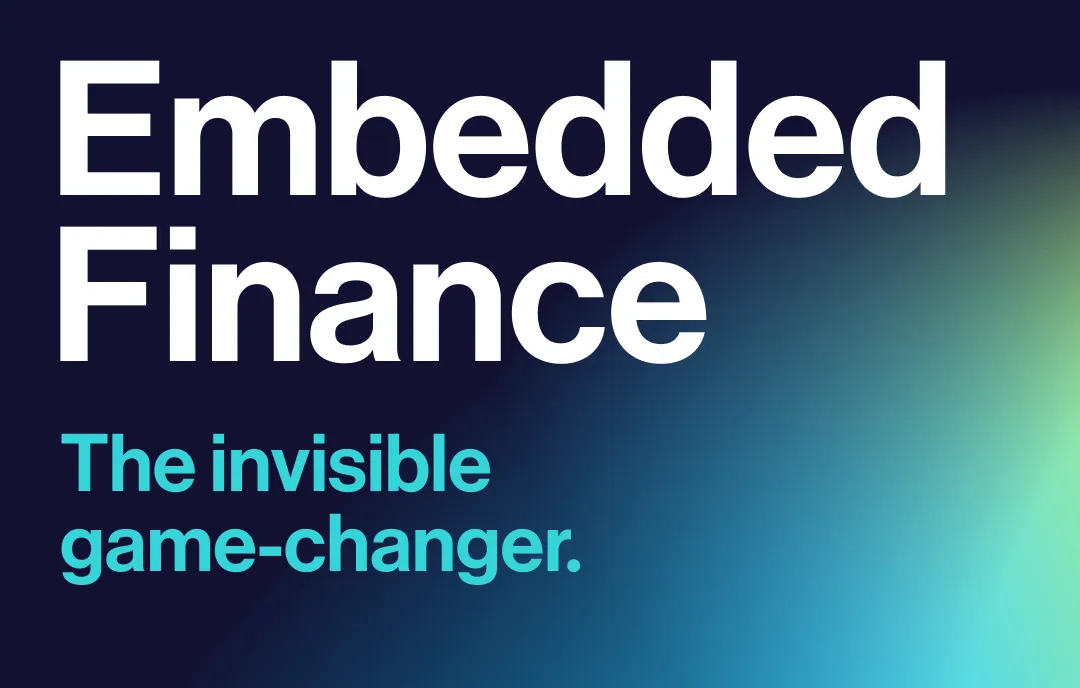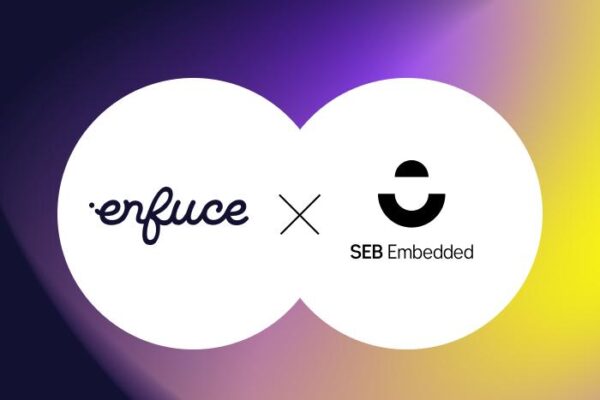Embedded payments: unlocking potential, building trust and creating solutions

Embedded payments have become an integral part of everyday life. From buying a cup of coffee to ordering a ride – and more, integrated invisible transactions are transforming the way customers interact, including with your business or brand.
Embedded finance – revolutionising transactions
In a world where increasingly customers expect more, now is the time to examine your business to ensure you can meet evolving needs and succeed in a real-time world.
By the end of 2026, embedded finance is predicted to account for more than $7 trillion financial transactions (source Bain & Co). At a time when some businesses are still bouncing back from the pandemic, embedded payments can play a crucial part in driving customer retention and long-term growth.
And working out how to integrate payments seamlessly doesn’t have to be painful. In fact, it should be frictionless. When thinking about how to add embedded payments to your services, partnering with a trusted strategic expert, who actually understands your business, ensures you can rapidly develop features that match your customers’ needs, drive growth and unlock new revenue streams. All without compromising on security and compliance.
Uncovering the potential of the invisible game-changer
Amazon may have pioneered embedded payments with its ‘buy now’ express-buying option, but other global players quickly followed. Uber, GrubHub and other big brands combined ‘put order’ and ‘pay’ into a slick single embedded payments feature.
But you don’t have to be a megacorporation to make embedded finance work for your business or brand. Harnessing the know-how of fintech partners can empower your business to also revolutionise how you include financial services.
As the name suggests, embedded financial services are so integrated that underlying financial transactions are invisible. No disruption – only easy digitally-connected experiences. And this ‘invisibility’ is a powerful tool for brands that want to reinvent the services they offer, streamline payment processes and maximise customer experiences to boost loyalty.
Navigating embedded payments
Although integrated payment solutions create convenience and efficiency, there are also challenges. While banks have established compliance processes, it’s an area many companies struggle to navigate.
To mitigate this risk, BaaS (Banking-as-a-Service) providers can partner with experts to shoulder the responsibility of regulatory compliance and ensure their embedded finance solutions are safe and secure.
Embedded payment benefits like transaction monitoring, regulatory reporting and financial reporting services, mean you can be confident that the embedded payment solutions for your business meet all regulatory requirements. For example, card services that provide full regulatory compliance and effortless onboarding.
Crucially, compliant and customisable tech stack and APIs can be easily integrated into your existing platforms. The result is revolutionary. You can rapidly expand customer bases in innovative ways and offer value-added services like Card as a Service (CaaS), exchange rate API offers, authorisation controls – and more.
Besides providing safe and secure embedded finance solutions, organisations also need to build customer trust. Developing relationships with companies that are already known to customers is an effective way to leverage the legacy of an established brand.
Visionary perspectives – industry-leading insights
Christoffer Malmer, the Head of SEB Embedded, sees embedded payments as part of a broader subset of embedded finance. While some perceive Banking-as-a-Service and embedded payments as contrasting concepts, Christoffer maintains that they actually complement one another. Businesses looking to enhance their services without necessarily focusing on financial offerings can easily explore integrated payments. Contrastingly, BaaS providers, like SEB Embedded, also enable companies to leverage embedded payments as part of their suite of financial products.
During our recent podcast revealing how embedded finance is revolutionising transactions, Christoffer also revealed two distinct ecosystems evolving in this space. The first revolves around technology stacks, where collaboration between banks and fintechs leads to the development of individual solutions that are exceptional in their specific area. Gaining the technological expertise of fintech partners, allows banks to build robust embedded finance platforms. The second ecosystem focuses on distribution, allowing fintechs and other potential distributors to build on existing embedded payment platforms. This collaborative approach enables companies to bring innovative financial services to market without becoming traditional banks.
The recent partnership between SEB Embedded and Enfuce launches the next-generation of virtual and physical card programmes, and fully embraces this cooperative approach by unlocking innovative ways of adding value and expanding the customer base.
Embedded finance – paving and paying the future
Embedded payment integration is part of a broader strategic shift in the financial industry, erasing the traditional separation between banking and daily life. Although embedded finance covers many areas, payments still lead the revolution. In Europe, embedded payments services have been forecasted to generate just over €277 billion in revenue over the next five years, starting in 2021.
Bottom line, the time to act is now.
Enfuce x SEB Embedded – partnerships for progress
For visionary leaders ready to implement inspired and modern card products, collaboration is key to success. Partnerships between traditional financial institutions and fintech companies, like SEB Embedded and Enfuce, accelerate the pace of new developments. It also fosters a vibrant ecosystem that seamlessly brings together tech ingenuity, opens up secure product development backed by compliance expertise, and inspires cutting-edge globally scalable solutions.
Strategic partnerships are a refreshing agile alternative to existing restrictive issuer processing platforms. Dynamic collaborations like this provide a unique opportunity for your business or brand to offer flexible modular bank-style services, without actually becoming a bank. You can also launch multiple products through the cloud for greater speed to market at lower cost.
Using the power of agile technology, backed by compliance know-how, means your organisation has more time to focus on customers and develop innovative new services. And knowing that all BINs, licences, products, and regulatory compliance are in order means you can rest easy.
Ready to elevate with embedded finance?
Like delivery services and music streaming platforms, embedded finance is set to become an integral part of everyday transactions, in both B2B and B2C payment markets. Everywhere. And it’s here to stay. So the question isn’t when but how should you integrate embedded finance into your business offering to provide flexible customer-focused features and drive long-term growth?
Ready to implement next-generation virtual and physical card programmes? We can help. Discover how now.
Answers to fintech’s biggest questions
And if you’re looking for more embedded finance revelations – or other industry insights, we can help with that too.
Every week we deep dive into the biggest issues facing fintech and gain perspective from some of the industry’s leading voices. Check us out on ‘In the Hot Seat’ with our host and Enfuce Co-founder and Co-CEO Denise Johansson.
Don’t miss our latest podcast with trailblazer Christoffer Malmer, the Head of SEB Embedded, to hear more about how embedded finance can revolutionise your business.



